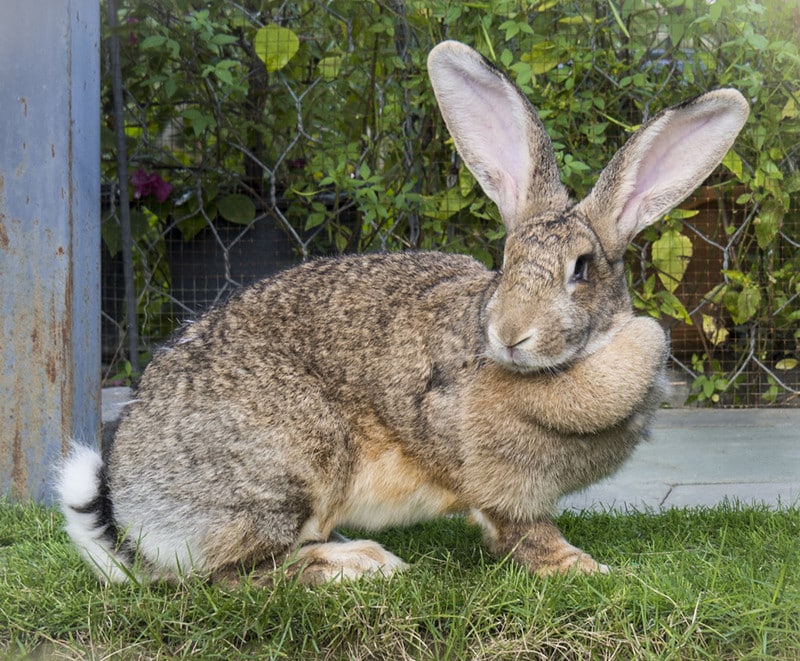How To Hold a Rabbit: 10 Vet-Approved Steps
By Beth Crane
Updated on
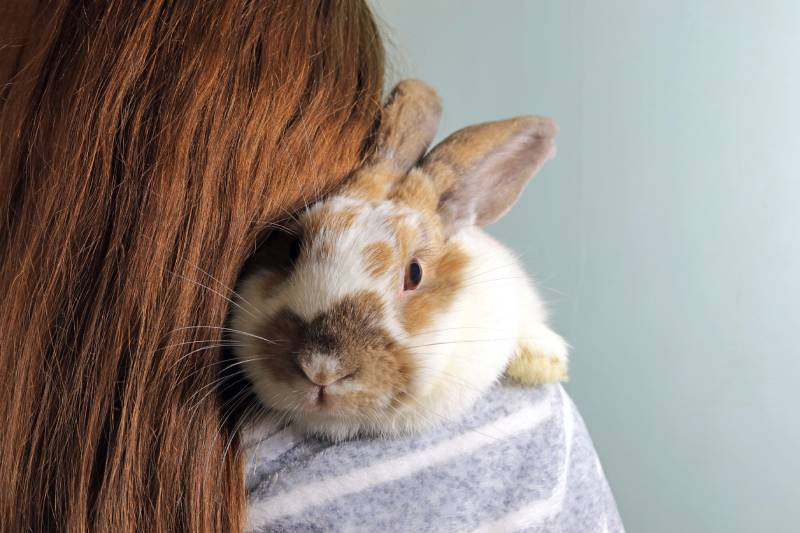
Interacting with our pets is a big part of bonding with them. Some animals love to be picked up and cuddled, while others are more hesitant. For example, rabbits generally don’t like to be picked up off the ground, instead preferring to climb into your lap if you’re sitting on the floor. That is because predators in the wild pick up rabbits; being close to the ground is natural for them and they feel much safer where they can run and hide if they need to.
However, there are times when your rabbit will need to be picked up and handled, such as for nail clips or if they need a veterinary exam. Knowing how to hold your rabbit safely and effectively is important, particularly as they have different needs than other companion animals. Read on to discover how to safely and effectively hold your rabbit, so you can be confident and keep your rabbit calm.
Before You Begin
Before picking up your rabbit, you must be aware of its fragility. Even the calmest rabbit can sometimes show their displeasure of being picked up by twisting and kicking out with their back legs, which can cause serious damage to their spine.1 Rabbits have very muscled and powerful hind legs, which enable them to dig, jump, and run away from predators.
If a rabbit kicks out with their legs too hard or is dropped from a table, it can break bones or be paralyzed. Be gentle but firm when handling your rabbit, and always hold it on the floor whenever possible to prevent injury from falling.
The 10 Expert Steps to Hold Your Rabbit
1. Allow the Rabbit To Get Used to You First
Holding a rabbit that knows you and is used to being handled is always helpful. This is particularly important if it’s your first time holding a rabbit, and it can be nerve-wracking! If the rabbit is well-socialized with people from a young age, holding it will be easier. Get onto the rabbit’s level by sitting down on the floor near them since it will be less threatening to them.
Allow them to approach you at their own pace and sniff you. If you have tasty treats, gently offer them one without moving quickly or getting too close; you can also place a treat on the floor to tempt the rabbit closer. When they get used to you, they’ll likely be curious and want to approach you.
2. Help Them Relax
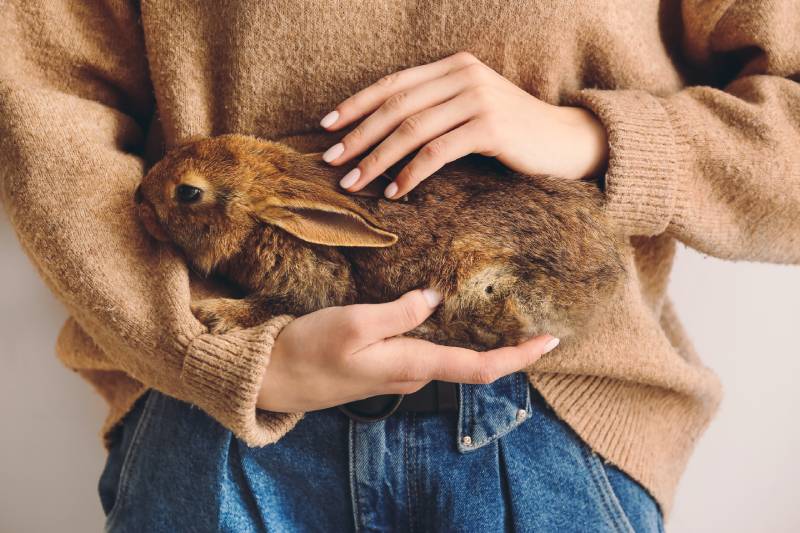
Once your rabbit has become more comfortable with you, you can help them relax. First, move slowly and let them know what you’re going to do by talking to them quietly. A rabbit’s eyesight isn’t great, but they have a great sense of hearing.
Next, try petting your rabbit gently on its forehead or nose, taking care to be gentle. Many rabbits don’t like being stroked on their chests, feet, undersides, or bottoms, so stick to areas that are easy to reach. You’ll know your rabbit is relaxing if it comes closer or closes its eyes in contentment. They may even nudge you to keep petting them!
3. Know Where to Hold Them
It’s best to start by wrapping one hand under your rabbit’s chest, between its front legs. Have your hand facing palm up and cup their body when you do this, getting a good (but gentle) grip under their elbows.
Doing this slowly but continuously is essential; jerking movements can startle rabbits. Once you’ve got one hand under your rabbit, you can use your other hand to support its bottom and pick it up.
4. Always Support Their Bottoms

Using your other hand, scoop your rabbit’s bottom up so you’re cradling them in both hands. Supporting your rabbit’s hind quarters helps keep its back straight and prevents it from twisting.
Make sure to lift them in one smooth motion, taking care not to jerk them up too quickly. If your rabbit tries to struggle or kick, gently place them down immediately and try again.
5. Keep Them Supported
Once you’ve lifted your rabbit into your arms, you must support their bodies. Most rabbits don’t like being lifted off the floor, so be aware that some rabbits might get stressed. Holding them against your chest can help them feel safe and even allow them to relax into you.
It’s important to hold them gently but firmly and feel confident. You can also turn the bunny so that your chest supports its feet.
6. Don’t Turn Them On Their Backs
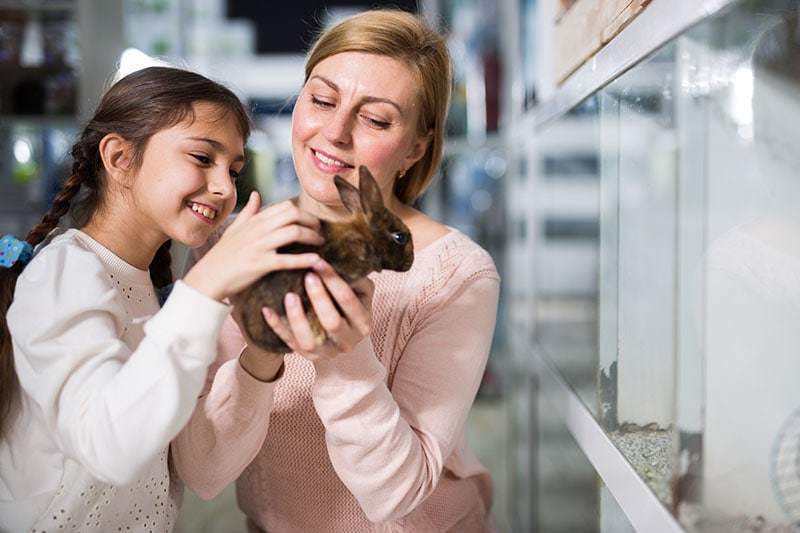
Because rabbits are prey animals, they have techniques to avoid predation in the wild. For example, when a rabbit is turned onto its back, they go incredibly still and don’t move a muscle. This is called “trancing.” Some might think that putting a rabbit on its back will make handling easier, but that is not the case.
A rabbit on its back is terrified and playing dead to stop itself from being eaten. This causes immense stress to rabbits, so you should ensure they are never put onto their backs when you’re holding them. It is very stressful for the rabbit and can make holding them more difficult next time.
7. Pet Them Gently
Once you are comfortable holding your rabbit, you can pet them gently. Petting your rabbit’s forehead and cheeks with your fingertips can help them relax and make them more comfortable with being held.
Only do this if you’re confident you have a good grip on them, as rabbits can quickly decide to escape if they have an opening! It’s much easier to pet rabbits while holding them close to the ground, so you can sit with your rabbit in your arms to give you more freedom to pet them.
8. Never Pick Them Up by Their Ears
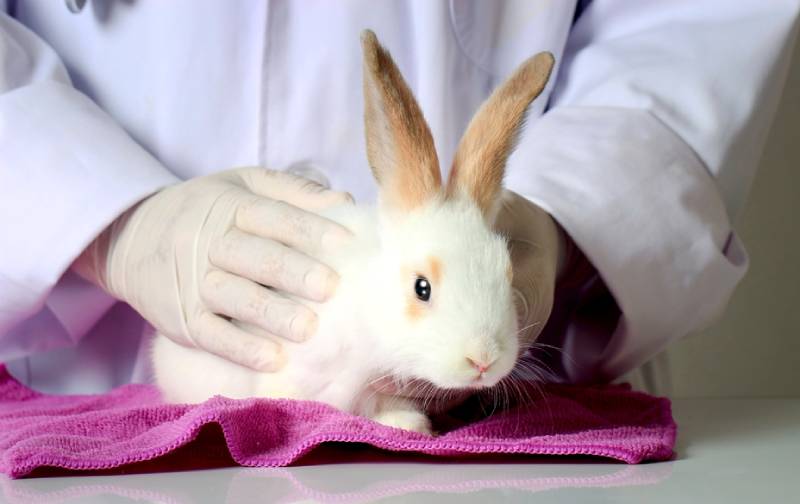
It seems obvious, but it needs to be said; you should never pick a rabbit up by its ears. It’s incredibly dangerous since the ears are vascular and sensitive. Likewise, picking your rabbit up by the scruff of the neck is also never advised. These methods will only make the rabbit afraid of you and might even prompt aggression due to pain.
9. Keep Close to the Ground
We’ve said previously that rabbits don’t like being high up due to their natural status as ground-dwelling prey animals. However, lifting your rabbit up off the floor can also pose a real danger to them, particularly if they’re frightened or jumpy.
In addition, dropped rabbits can fracture their spines or legs, even from falls of only a few feet. These injuries from minor falls are often the result of unhealthy rabbits losing bone density, which is why it’s so important to provide an enriching environment for your bunny.
10. Put Them Down Gently
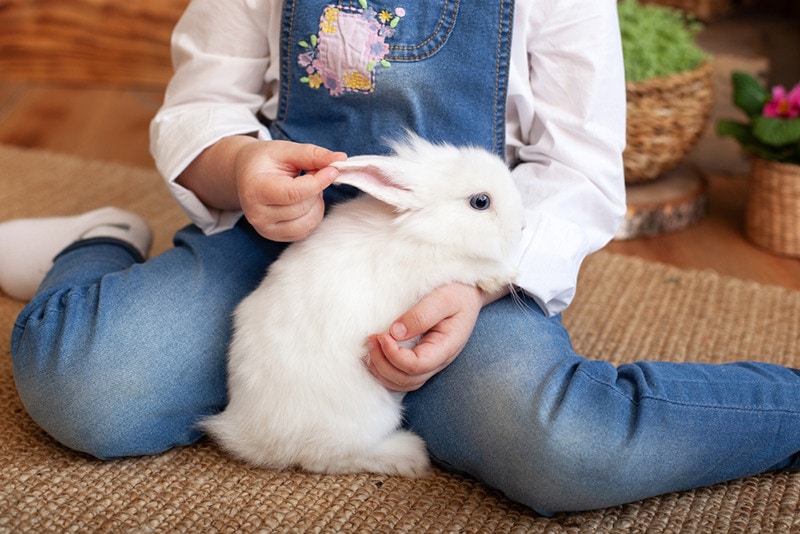
Similarly to the last point, placing your rabbit down gently when you’ve finished handling them is important. If you drop them, they are at serious risk of bone fractures or internal injury. Rabbits that are roughly handled will likely be afraid of you, too, making any future handling sessions with them more difficult.
It’s best to gently place your rabbit back down once you’ve finished holding them and give them a stroke or a yummy treat to reward the good behavior.
Final Thoughts
Rabbits prefer being petted to being picked up off the ground, but sometimes it’s necessary. Knowing how to hold your rabbit safely, comfortably, and confidently can make all the difference to you and your bunny, especially if the situation is more stressful (like nail clips!). Although your bunny may take time to get used to the action, eventually, it will learn that you do not pose a threat.
Featured Image Credit: Dean Clarke, Shutterstock



